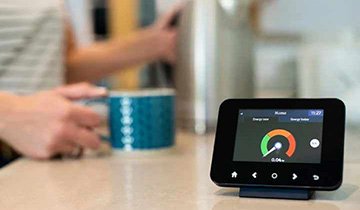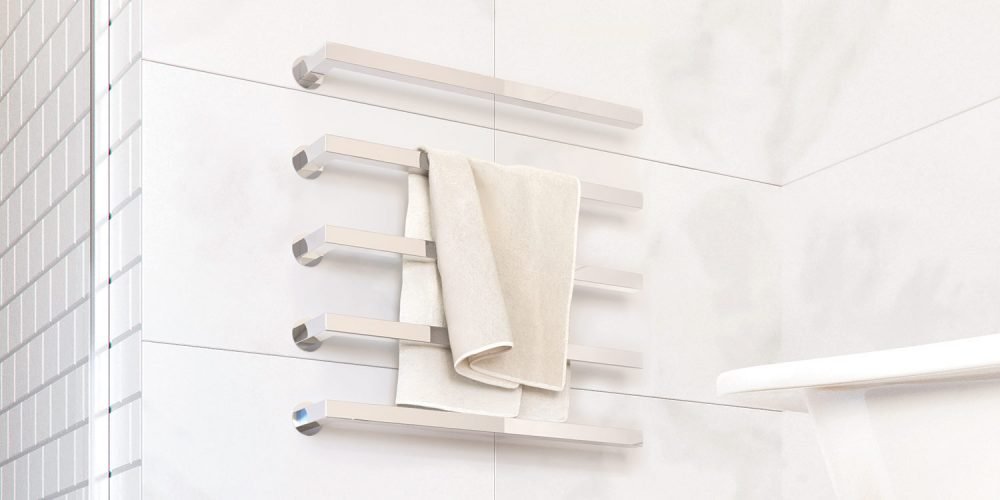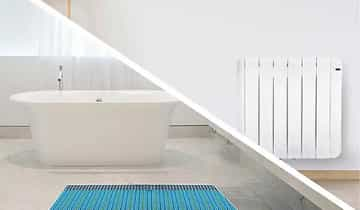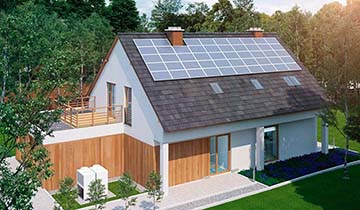6 min read
What's best? Underfloor heating or radiators?
Without a doubt 2020 was a year of many ups and downs and now with the cooler weather upon us, it is important that we focus on the heating in our...

With the cold weather just around the corner, many of us will be turning on the heating, monitoring the thermostat, looking at our smart meters and consider looking for better energy deals to help reduce heating bills.
So, if you are looking at ways to reduce heating bills, lower your carbon footprint and embrace better energy efficiency then we have put together this quick guide that gives you some practical pointers to action right now.
According to Which, you could save over £300 per year just by switching energy suppliers. This is because many households end up being on standard rates when their contract ran out which means higher monthly energy bills especially when the heating gets turned on during the colder months.
A good rule of thumb is to review your energy tariff annually. Some suppliers may have early termination fees on contracts so it is important to read the small print so you don’t incur any penalties which end up eating into the savings you could make.
There are plenty of price comparison websites to compare different tariffs but if you are a great negotiator, talk to your existing supplier and negotiate a better deal.
The ‘Smart Meter Statistics’ Report (May 2019) stated that over 15 million smart meters had been installed in domestic households. Smart meters provide real time data on energy use and, in theory, reduce the need to provide meter readings as this is done automatically via the smart meter.
Smart meters are intended to educate the homeowner on energy efficiency but unless you act on the information provided by the smart meter, you won’t save as much money as you could…especially when it comes to reducing heating bills.
Underfloor heating is available as a water-based or electric matting system. Both underfloor heating systems provide an even distribution of heat by using radiant heat to warm a room from the ground up. Electric underfloor heating is 100% efficient at point which means that there is minimal energy waste and every penny you spend is converted into heat.
Historically electric underfloor heating has the perception of being expensive to run but this is no longer the case. Electric heating technology has significantly improved which makes it easier and cheaper to install as well as use. In fact, in a well-insulated room, it costs less to run electric underfloor heating for a month compared with the cost of a takeaway coffee.
In addition, the UK government still plans to ban gas heating in new homes by 2025 as part of a move to hit carbon emission targets by 2050. Combine this with the changes made in the new SAP 10 guidance and electric heating becomes even more appealing.
If you have already installed electric underfloor heating or considering installing it, check out the electric underfloor heating running cost calculator to see how much it costs to run. We think you will be pleasantly surprised.

According to the Energy Saving Trust if you reduce the temperature of a room by 1oC it can reduce heating bills by up to £75!
A great starting point is to create a heating schedule that is tailored to your lifestyle because you don’t want the heating on when nobody is there. Programmable thermostats are a perfect way to set up heating schedules and automatically adjust the temperature of any room to your required level at the time when you want it. For electric underfloor heating, ThermoSphere’s programmable thermostat features a 7 day, 6 event heating schedule so you can easily set up the room to warm up exactly when you need it.
For the more tech-savvy homeowner who enjoy using smart technology, the SmartHome thermostat from ThermoSphere would be the perfect choice. Once installed and the ThermoSphere heating app is downloaded to your smartphone, you will be able to control your underfloor heating from anywhere. You can change the temperature, edit your heating schedule and adjust all the settings from your smartphone. If you are running late, just start the app and adjust the heating accordingly and the thermostat will do the rest. The SmartHome thermostat allows you to monitor and identify opportunities where you could be saving energy and therefore reduce heating bills. Pretty smart, right?
Insulation is a vital component in the fight to reduce heating bills. From loft insulation to cavity wall insulation, the better your home is insulated the more energy efficient it will be. This is because the heat produced remains in the home and can’t escape as fast as a home with below average insulation. If heat is escaping, then your heating system will be on for longer and working harder to reach your desired room temperature and that will cost you much more money.
Running from October 2020 to March 2021 is the government’s Green Homes Grant. If you are a residential landlord or a homeowner then you can apply for vouchers to be put towards the cost of installing better energy efficient measures in the home. Underfloor heating is included as a secondary measure!
When it comes to underfloor heating, it is important to not underestimate the use of insulation as part of your installation. By including underfloor heating insulation you can increase the energy-efficiency of the whole system by up to 50%! This is because the heat that the underfloor system creates, is reflected up by the insulation boards and doesn’t get lost through the substrate. There are a wide range of insulation boards available to suit any floor type and come in a range of thicknesses. The thicker the board the more heat will get reflected upwards to heat the room to a perfect temperature.

Towel rails and towel bars are design to warm towels and are not necessarily a primary heat source for the entire room. Because towel bars and towel rails generate heat through convection, it can often get lost via the extractor fan. Also, if towels are left on them, the heat generated get absorbed in the towel. However if you install underfloor heating and towel rails or towel bars, you have one primary heat source for the room and a secondary source to simply warm towels.
To reduce heating bills further, there are smaller tweaks you can make to your home when the heating is on. For example ensuring windows are shut and the curtains are tightly pulled together at night. As basic as it sounds, these are one of the most common forms of heat loss in a home.
ThermoSphere’s programmable thermostat comes with an open window detection feature to help reduce heat loss. If it detects a drop in temperature it will turn off for 15 minutes and then come back on again. This helps to conserve energy and reduce money being spent on heating a home.
That’s it for now. Hopefully these 7 tips to help reduce heating bills have provided some food for thought. However if you have any questions, feel free to chat to one of the team.

6 min read
Without a doubt 2020 was a year of many ups and downs and now with the cooler weather upon us, it is important that we focus on the heating in our...

5 min read
I recently asked our wonderful Customer Experience team what were the typical questions asked byhomeownerswhen they called us. Unsurprisingly, one...

9 min read
If you’re one of over 2 million homes in the UK not connected to a mains gas supply you know the challenges surrounding heating your home. In this...